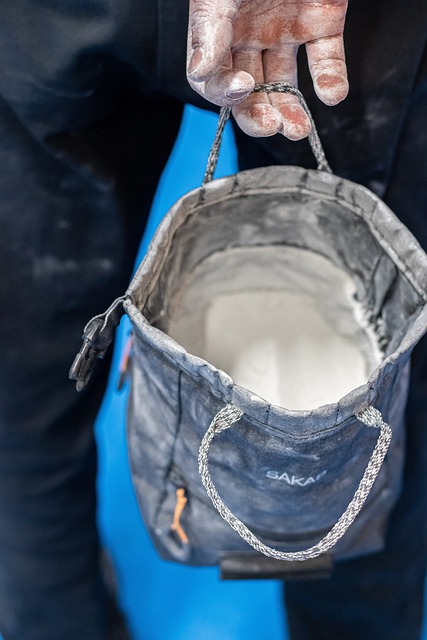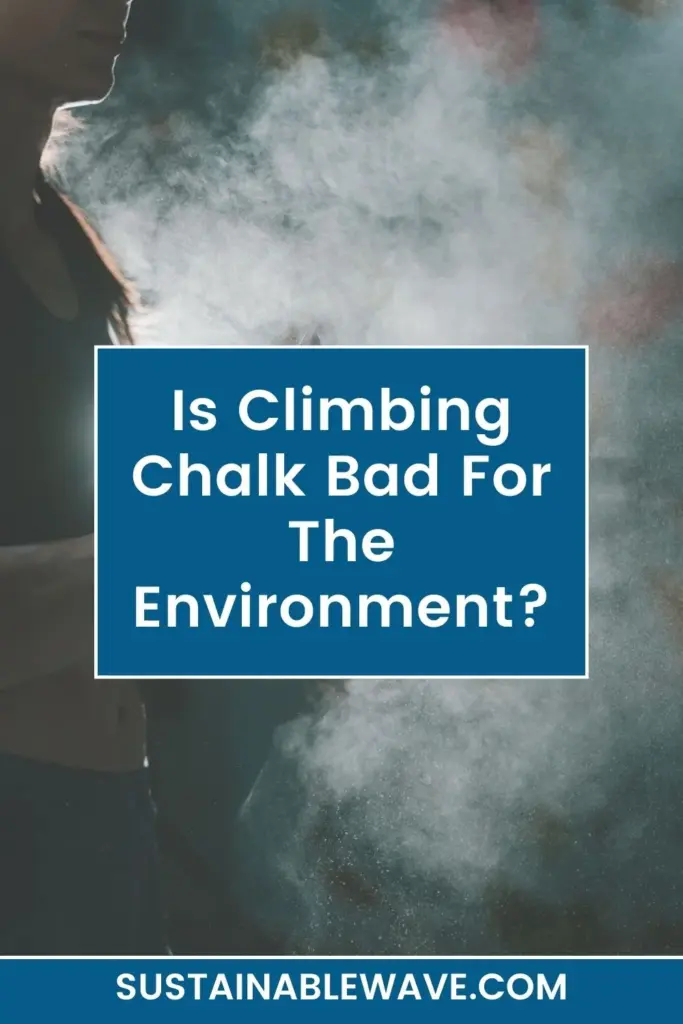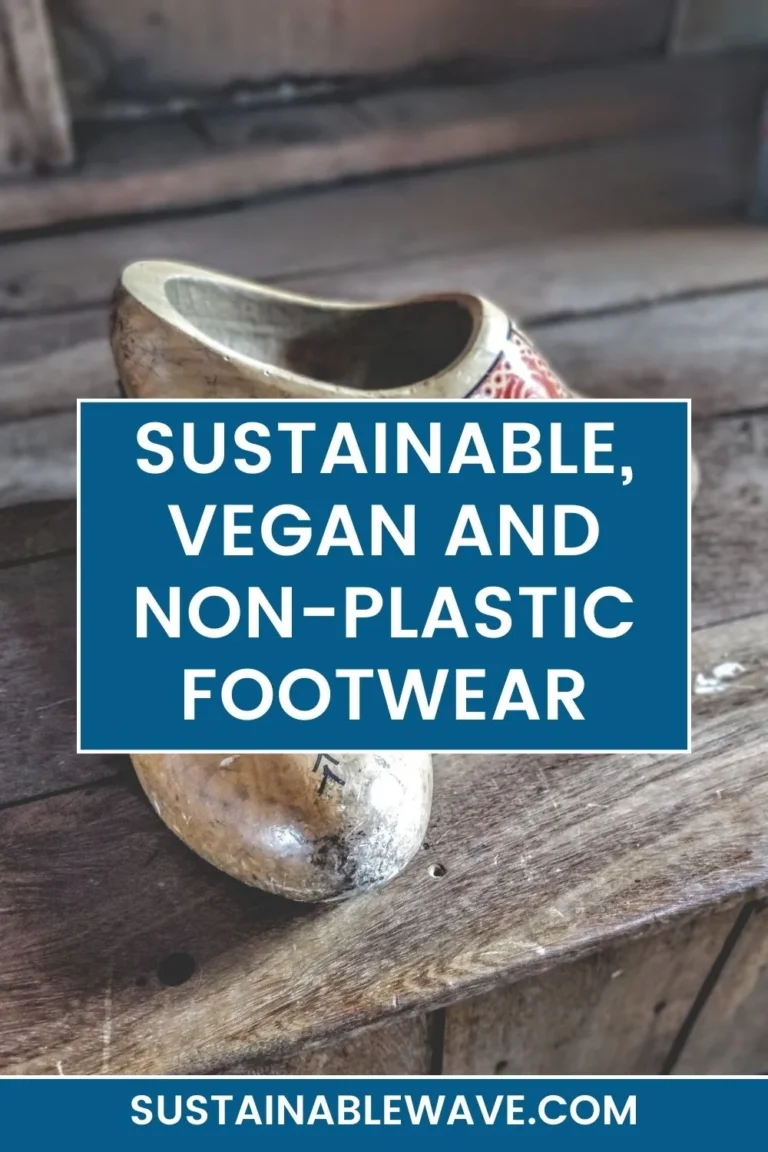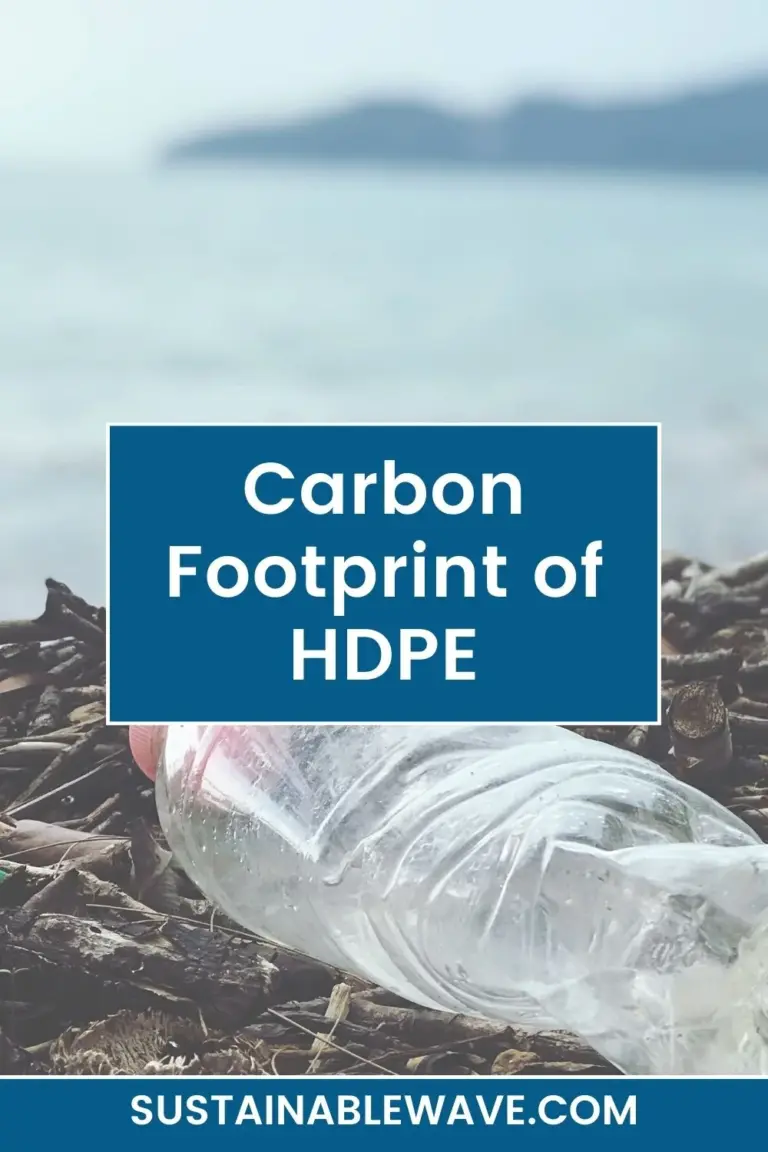When we think about climbing and the gear associated with it, the environmental impact of something as seemingly harmless as chalk might be the furthest from our minds. However, as with many things we use daily, the compounds in climbing chalk can have an unseen footprint on the Earth.
Climbing chalk, primarily made of magnesium carbonate, has an environmental footprint due to mining processes, production emissions, and packaging waste. While not the largest environmental offender, its impact is noteworthy and calls for sustainable alternatives.
Let’s dive in and see what the fuss is all about.
Is Climbing Chalk Bad For The Environment?

Climbing chalk, predominantly made of Magnesium Carbonate, is used to dry a climber’s hands.
Harvested from mineral-rich seawater or mined directly, the production of magnesium carbonate can be resource-intensive.
Magnesium Carbonate Production and Carbon Footprint
Extracting and processing magnesium carbonate requires energy. These processes release CO2 into the atmosphere, contributing to the greenhouse gas effect. How does this stack up against other climbing equipment, and should we be concerned?
The By-products and Waste
Mining processes always come with by-products. The tailings, residue, and wastewater from magnesium carbonate mining can strain the local ecosystem, sometimes leaching harmful chemicals into the groundwater.
Land Degradation and Habitat Disruption
The direct impact of mining on landscapes is evident. Habitats get disrupted, species get displaced, and the once-natural landscapes may take decades or even centuries to recover.
Packaging and Its Environmental Toll
Often overlooked, the packaging of climbing chalk contributes to its environmental footprint. From plastic bags to aluminum-lined pouches, the waste adds up, especially given the frequency with which climbers buy and use chalk.
Climbing Chalk Ingredients
Climbing chalk is primarily composed of magnesium carbonate. This white, powdery substance is chosen for its moisture-absorbing properties, which provide climbers with a dry grip.
Magnesium carbonate occurs naturally as a mineral, but it can also be produced synthetically. Some climbing chalk products may have added drying agents or antiperspirants to enhance moisture absorption.
Additionally, to address environmental concerns, several manufacturers are now incorporating sustainable sourcing and production methods.
How To Make Climbing Chalk Yourself
Making climbing chalk involves primarily processing magnesium carbonate to achieve the right consistency.
While commercial manufacturing involves mining and refining the mineral, a DIY approach can be more straightforward:
- Source Magnesium Carbonate: Purchase bulk magnesium carbonate from chemical suppliers.
- Crush to Desired Texture: Using a mortar and pestle or a dedicated crusher, break down the magnesium carbonate into a fine powder or chunky texture, depending on personal preference.
- Add Enhancers (Optional): Some climbers add essential oils for scent or rice alcohol to create a liquid version of the chalk.
- Store Properly: Keep the prepared chalk in airtight containers or chalk balls to maintain its moisture-absorbing properties and ensure longevity.
Remember, while making your own chalk can be a fun experiment, commercial chalk often undergoes processes to ensure consistency, purity, and performance.
Is Climbing Chalk Bad for Lungs?
While climbing chalk, primarily magnesium carbonate, is essential for ensuring a good grip on climbing surfaces, concerns have arisen about its potential effects on respiratory health. Especially in indoor climbing gyms, where ventilation might be limited, the airborne particles from chalk can become a concern.
Frequent and prolonged exposure to these airborne particles can irritate the respiratory system, potentially exacerbating conditions like asthma in susceptible individuals. The fine chalk dust can be inhaled deeply into the lungs, leading to inflammation or other respiratory symptoms like coughing or shortness of breath.
Moreover, indoor climbers, trainers, and gym staff who spend considerable hours within these environments face a heightened risk. To mitigate this, many gyms are adopting better ventilation systems, encouraging the use of liquid chalk, or installing air purifiers.
Best Climbing Chalk Alternatives
As the climbing community becomes more environmentally conscious, there’s been a surge in the search for climbing chalk alternatives.
While traditional climbing chalk serves its purpose effectively by providing a dry grip, the associated environmental concerns have led to the exploration and adoption of more sustainable options.
Here’s a deep dive into some of the popular alternatives:
1. Eco-friendly Chalk
Several brands are now producing climbing chalk that has a lower environmental footprint. These are often made using ethically-sourced magnesium carbonate, and special care is given to the production process to minimize carbon emissions. Additionally, the packaging is designed to be biodegradable or recyclable, further reducing waste.
2. Liquid Chalk
Liquid chalk (affiliate link), a mixture of alcohol and magnesium carbonate, is gaining popularity among climbers. One application can last longer than traditional chalk, which means climbers use less overall. Plus, with fewer particles getting airborne, it’s less likely to contribute to respiratory issues in indoor climbing gyms.
3. Resin-Based Chalk Alternatives
Natural resin products are emerging as a grip enhancer for climbers. While they don’t absorb moisture like magnesium carbonate, they provide a tacky feel, improving grip. They’re made from natural compounds, ensuring minimal environmental impact.
4. DIY Chalk Mixes
Some climbers are taking matters into their own hands by creating DIY chalk mixes using cornstarch or rice flour. These ingredients, readily available in most kitchens, offer a decent grip, especially for lighter climbs.
5. Chalk Balls
Instead of loose chalk, some climbers opt for chalk balls (affiliate link) – mesh spheres filled with chalk. These balls reduce the amount of chalk that becomes airborne and can be less wasteful as they release a minimal yet effective amount of chalk onto the hands.
6. Reduced Chalk Use
A simple yet effective alternative is using less chalk. Through mindful practice, climbers can train themselves to rely less on frequent chalk applications, thereby reducing their consumption.
Steps to Reduce The Environmental Impact
Being environmentally conscious doesn’t merely involve recognizing the carbon footprint we leave behind; it’s about actively working towards reducing it.
This proactive approach is what’s termed your ‘carbon handprint.’ Here are some impactful ways climbers, in particular, can reduce their environmental impact when it comes to climbing chalk:
- Bulk Purchases: Investing in larger quantities minimizes packaging waste. Not only does this approach reduce the amount of plastic and paper used, but it also lessens transportation emissions due to fewer delivery trips.
- Eco-Friendly Brands: Choose brands that emphasize sustainability. Such brands likely source materials responsibly, use efficient production methods and opt for biodegradable or recyclable packaging.
- Recycle and Reuse: Ensure you recycle any non-biodegradable chalk packaging. When possible, repurpose chalk bags or containers, further extending their lifespan and reducing waste.
- Awareness and Advocacy: Be an ambassador for the environment. Share information about sustainable climbing practices within your network. Often, making a significant impact starts with sparking a conversation.
Conclusion on Is Climbing Chalk Bad For The Environment?

Addressing the question, “Is Climbing Chalk Bad For The Environment?” leads us to acknowledge the multifaceted impacts of our choices.
While climbing chalk might not be the largest environmental offender, it’s a cog in the larger machine of consumer choices that affect our planet.
As climbers and stewards of the Earth, understanding these impacts and making informed decisions can make a world of difference.
I’m Thomas, the owner of SustainableWave. Passionately promoting a sustainable planet. With experience in various eco-roles, I’ll share green tips, sustainability hacks, and personal eco-journeys on my blog.






